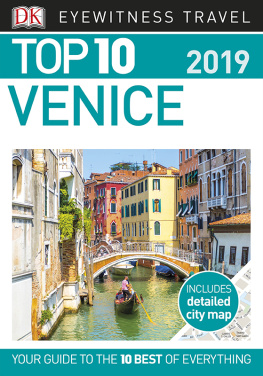Sophia Psarra - The Venice Variations: Vol Tracing Architectur
Here you can read online Sophia Psarra - The Venice Variations: Vol Tracing Architectur full text of the book (entire story) in english for free. Download pdf and epub, get meaning, cover and reviews about this ebook. year: 2018, publisher: Book Network Intl Limited trading as NBN International (NBNi), genre: Romance novel. Description of the work, (preface) as well as reviews are available. Best literature library LitArk.com created for fans of good reading and offers a wide selection of genres:
Romance novel
Science fiction
Adventure
Detective
Science
History
Home and family
Prose
Art
Politics
Computer
Non-fiction
Religion
Business
Children
Humor
Choose a favorite category and find really read worthwhile books. Enjoy immersion in the world of imagination, feel the emotions of the characters or learn something new for yourself, make an fascinating discovery.

- Book:The Venice Variations: Vol Tracing Architectur
- Author:
- Publisher:Book Network Intl Limited trading as NBN International (NBNi)
- Genre:
- Year:2018
- Rating:4 / 5
- Favourites:Add to favourites
- Your mark:
- 80
- 1
- 2
- 3
- 4
- 5
The Venice Variations: Vol Tracing Architectur: summary, description and annotation
We offer to read an annotation, description, summary or preface (depends on what the author of the book "The Venice Variations: Vol Tracing Architectur" wrote himself). If you haven't found the necessary information about the book — write in the comments, we will try to find it.
The Venice Variations: Vol Tracing Architectur — read online for free the complete book (whole text) full work
Below is the text of the book, divided by pages. System saving the place of the last page read, allows you to conveniently read the book "The Venice Variations: Vol Tracing Architectur" online for free, without having to search again every time where you left off. Put a bookmark, and you can go to the page where you finished reading at any time.
Font size:
Interval:
Bookmark:
The Venice Variations
The Venice Variations
Tracing the Architectural Imagination
Sophia Psarra

First published in 2018 by
UCL Press
University College London
Gower Street
London WC1E 6BT
Available to download free: www.ucl.ac.uk/ucl-press
Text Sophia Psarra, 2018
Images Sophia Psarra and copyright holders named in captions, 2018
Sophia Psarra has asserted her right under the Copyright, Designs and Patents Act 1988 to be identified as the author of this work.
A CIP catalogue record for this book is available from The British Library.
This book is published under a Creative Commons Attribution Non-commercial Non-derivative 4.0 International license (CC BY-NC-ND 4.0). This license allows you to share, copy, distribute and transmit the work for personal and non-commercial use providing author and publisher attribution is clearly stated. Attribution should include the following information:
Psarra S. 2018. The Venice Variations: Tracing the Architectural Imagination. London: UCL Press. DOI: https://doi.org/10.14324/111.9781787352391
Further details about Creative Commons licenses are available at http://creativecom mons.org/licenses/
ISBN: 978-1-78735-241-4 (Hbk.)
ISBN: 978-1-78735-240-7 (Pbk.)
ISBN: 978-1-78735-239-1 (PDF)
ISBN: 978-1-78735-242-1 (epub)
ISBN: 978-1-78735-243-8 (mobi)
ISBN: 978-1-78735-244-5 (html)
DOI: https://doi.org/10.14324/111.9781787352391
To Tony
for not suffering from his imagination
Preface
The need to imagine an ideal place for living in defines a basic human condition deeply embedded in our cultural memory. From Paradise and the myth of Arcadia through to the twentieth-century Modernist utopias and contemporary ideas about sustainability, imagining better urban environments remains persistently and remarkably relevant, raising recurring questions. How do cities evolve as complex spaces nurturing both urban creativity and the fortuitous art of discovery? By which mechanisms do they foster imagination and innovation? How do they adapt and sustain themselves over time? For architects, planners or simply anyone interested in better buildings and cities, these questions concern the interaction of the urban places created collectively with the power of conscious design and the individual imagination. But while past utopias were conceived in terms of an ideal geometry, contemporary definitions of exemplary models of urban design seek technological solutions and paradigms of optimal organisation. The Venice Variations explores Venice as a prototypical city that may hold unique and holistic answers to the ancient narrative of utopia. Venice was not the result of a preconceived ideal, but the pragmatic outcome of informal social and economic networks of communication. Its urban creativity, though, came to represent the quintessential combination of place, buildings and institutions of its time.
Through a discussion of Venice and two works owing their inspiration to this city Italo Calvinos Invisible Cities and Le Corbusiers Venice Hospital the book describes Venice as a system that emerges like the outcome of a highly probabilistic algorithm, that is, a structure with a small number of rules capable of producing a large number of variations. In The Venice Variations I pursue an uncompromising argument suggesting that, deep down, the rapidly escalating processes of urban development in train around our big cities share many of the motivations for survival, shelter and trade that brought Venice into existence. Rather than seeing these places as problems to be solved, we should regard them as complex systems with the capacity to evolve, as Venice did from its unprepossessing origins in the marshes of the Venetian lagoon to the model city that endured a thousand years. The book thus attempts to free Venice from stereotypical representations, to reveal its generative capacity to inform potential other Venices in the future.
Acknowledgements
I remember the Theofania well, the Feast of Epiphany or the Feast of Lights, the quayside liturgical ceremony incorporating the Blessing of the Waters. Resplendent in his gold embroidered vestments, the priest would hurl the sacred cross into the sea. Peals of church bells rang out as teenage divers plunged eagerly into the freezing water in a race to recover it. On summer mornings, the market vendors voices were drowned out by the ships horns echoing ashore from the sea. On bank holidays, the crowds cheered at students and scouts marching with flags fluttering in the wind. In the evenings, the places of worship and the fishermens boats turned on their lights, like seafaring vessels of souls starring the dark sea. This was a city nurtured by an intimate and time-honoured relationship with the water, ritual and trade.
The Venice Variations is inspired by two things: Italo Calvinos Invisible Cities, a prose poem for cities, and my fascination with living, working cities. I grew up in a coastal town bordering the southern Ionian Sea amidst the remnants of the Mycenaean, Spartan, Roman, Byzantine, Frankish, Venetian and Ottoman empires. Of all empires, Venice was the most immanent, from everyday customs to winged lions on fortifications and a local dialect resonant with a legacy of winged words. We had, of course, forgotten, but language remembered, as we took strolls on the Molo and ate fresh dolci and delicious preserved naranza. Venice lay veiled from consciousness, until the day I scrutinised a map of the city, floating in its distant lagoon. Some instinct told me to start work from the squares of the Serenissima; from the campi (squares), where the spectacle of the water meets the faade of the church; where the stroller encounters the grocery boat, and the gondolier picks up his passengers at the steps by the bridge. My interest in Venice ignited at that moment, from that intuition derived from four thousand years of Greco-Roman tradition, from the patios with the deep wells, the feast days and the processions. Other places the grand mansions with their waterfront loggias, and their Venetian shutters scoured by sea salt, the walled gardens, the citrus trees, the anachronous train station, the warehouses harbouring raisins and figs, the textile workshops, the cigarette factories, the sandy marshlands, the mills, the river with its mud flats and reeds were filling the memory gaps, bridging the spaces in between.
The place I set out to explore in the book is not tourist Venice, historic Venice or todays Venice as a museum, but Venice as a cosmopolitan working city, built on water by the forces of travel, ritual, immigration and commerce. The book interrogates the imagination in Venice, seeing this city as the prototype for other cities. Venice is one of the most intense manifestations of how urban places are founded and evolve, revealing, to those prepared to enquire, the operations and the creativity that bring them into being. What I pursue here is the integration of the imagination with analytical explication, the synthesis of architecture, urbanism, literature and the extension of Calvinos literary ideas into an architectural and urban discourse. In the realm of architecture there is no provincial separation, no adversarial loyalties to either buildings or cities, creative practice or analytical work, imaginative or rational thought. There is only the vital drive to create and illuminate, by whatever means, memory and drawing, history and analysis, numbers and words, reflection combined with speculation and the imaginative synthesis of all these complementary modes of thought.
Next pageFont size:
Interval:
Bookmark:
Similar books «The Venice Variations: Vol Tracing Architectur»
Look at similar books to The Venice Variations: Vol Tracing Architectur. We have selected literature similar in name and meaning in the hope of providing readers with more options to find new, interesting, not yet read works.
Discussion, reviews of the book The Venice Variations: Vol Tracing Architectur and just readers' own opinions. Leave your comments, write what you think about the work, its meaning or the main characters. Specify what exactly you liked and what you didn't like, and why you think so.

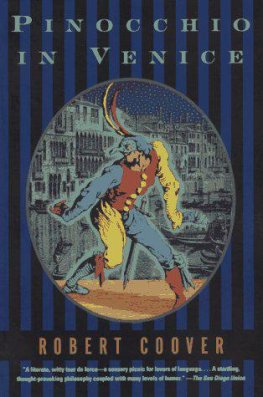

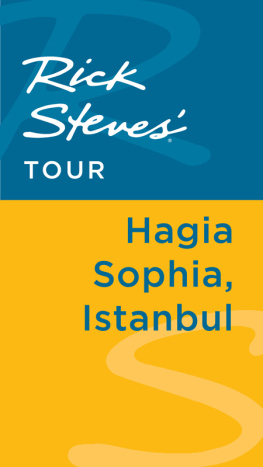
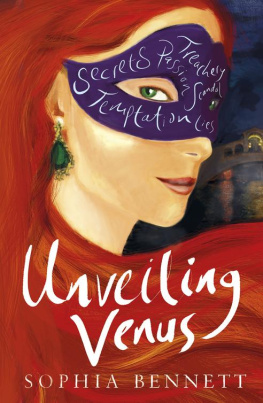
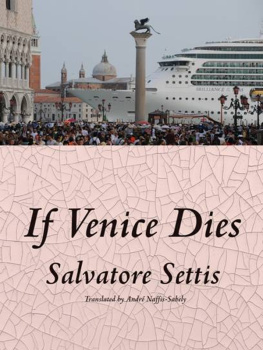
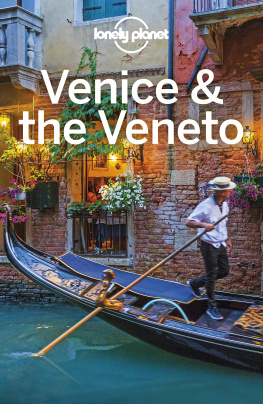
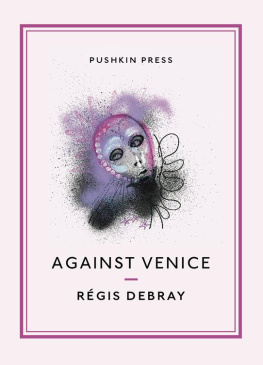
![Bosworth - Italian Venice: a history[Electronic book]](/uploads/posts/book/194557/thumbs/bosworth-italian-venice-a-history-electronic.jpg)

